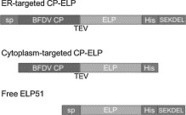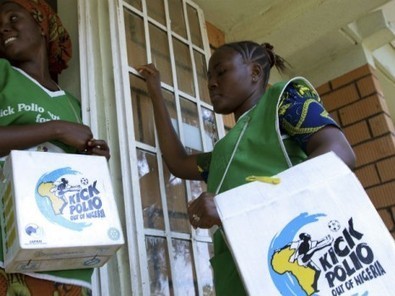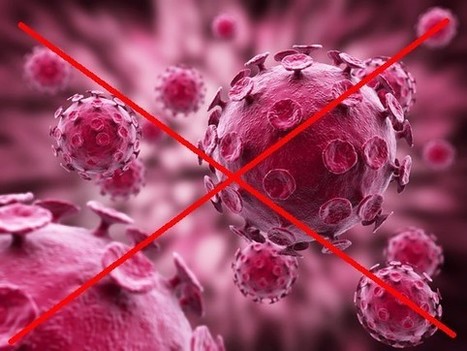 Your new post is loading...
 Your new post is loading...

|
Scooped by
Ed Rybicki
|
Zika and chikungunya viruses have caused major epidemics and are transmitted by Aedes aegypti and/or Aedes albopictus mosquitoes. The “Sementis Copenhagen Vector” (SCV) system is a recently developed vaccinia-based, multiplication-defective, vaccine vector technology that allows manufacture in modified CHO cells. Herein we describe a single-vector construct SCV vaccine that encodes the structural polyprotein cassettes of both Zika and chikungunya viruses from different loci. A single vaccination of mice induces neutralizing antibodies to both viruses in wild-type and IFNAR−/− mice and protects against (i) chikungunya virus viremia and arthritis in wild-type mice, (ii) Zika virus viremia and fetal/placental infection in female IFNAR−/− mice, and (iii) Zika virus viremia and testes infection and pathology in male IFNAR−/− mice. To our knowledge this represents the first single-vector construct, multi-pathogen vaccine encoding large polyproteins, and offers both simplified manufacturing and formulation, and reduced “shot burden” for these often co-circulating arboviruses.

|
Scooped by
Ed Rybicki
|
Novavax Inc. previously responded to concerns about Ebola and Middle East Respiratory Syndrome by making new vaccine candidates. But it has remained mum on Zika virus, until now.

|
Scooped by
Ed Rybicki
|
During the 2009 H1N1 influenza pandemic, vaccines for the virus became available in large quantities only after human infections peaked. To accelerate vaccine availability for future pandemics, we developed a synthetic approach that very rapidly generated vaccine viruses from sequence data. Beginning with hemagglutinin (HA) and neuraminidase (NA) gene sequences, we combined an enzymatic, cell-free gene assembly technique with enzymatic error correction to allow rapid, accurate gene synthesis. We then used these synthetic HA and NA genes to transfect Madin-Darby canine kidney (MDCK) cells that were qualified for vaccine manufacture with viral RNA expression constructs encoding HA and NA and plasmid DNAs encoding viral backbone genes. Viruses for use in vaccines were rescued from these MDCK cells. We performed this rescue with improved vaccine virus backbones, increasing the yield of the essential vaccine antigen, HA. Generation of synthetic vaccine seeds, together with more efficient vaccine release assays, would accelerate responses to influenza pandemics through a system of instantaneous electronic data exchange followed by real-time, geographically dispersed vaccine production.

|
Scooped by
Ed Rybicki
|
Plant expression systems based on nonreplicating virus-based vectors can be used for the simultaneous expression of multiple genes within the same cell. They therefore have great potential for the production of heteromultimeric protein complexes. This work describes the efficient plant-based production and assembly of Bluetongue virus-like particles (VLPs), requiring the simultaneous expression of four distinct proteins in varying amounts. Such particles have the potential to serve as a safe and effective vaccine against Bluetongue virus (BTV), which causes high mortality rates in ruminants and thus has a severe effect on the livestock trade. Here, VLPs produced and assembled in Nicotiana benthamiana using the cowpea mosaic virus-based HyperTrans (CPMV-HT) and associated pEAQ plant transient expression vector system were shown to elicit a strong antibody response in sheep. Furthermore, they provided protective immunity against a challenge with a South African BTV-8 field isolate. The results show that transient expression can be used to produce immunologically relevant complex heteromultimeric structures in plants in a matter of days. The results have implications beyond the realm of veterinary vaccines and could be applied to the production of VLPs for human use or the coexpression of multiple enzymes for the manipulation of metabolic pathways. Generic reovirus-like particle by Russell Kightley Media

|
Scooped by
Ed Rybicki
|
Recombinant human papillomavirus (HPV) virus-like particle (VLP) vaccines based on the L1 capsid protein have been shown to be efficient prophylactic vaccines, albeit type-specific. As a first step to investigate the feasibility of extending protection against non-vaccine types, HPV-16 L1 chimaeras were generated. The region downstream of L1 amino acid (aa) 413 was replaced with selected cross-neutralising epitopes (aa 108-120; 56-81 and 17-36) derived from the HPV-16 L2 protein, generating proteins designated SAF, L2.56 and L2.17, respectively. The chimaera L1BPV containing BPV-1 L2 peptide aa 1-88 was similarly constructed. The chimaeras were evaluated for expression in insect cells; their ability to form particles was studied by electron microscopy, and their immunogenicity was evaluated in mice. SAF, L2.56 and L2.17 proteins were expressed to high concentrations in insect cells and elicited HPV-16 pseudovirus-neutralising anti-L1 antibodies. L2.56 and L2.17 also elicited anti-L2 antibodies. L1BPV was a poor vaccine candidate due to low levels of expression with concomitant lack of immunogenicity. All chimaeras assembled into tertiary structures. The results indicate that chimaeric L1 vaccines incorporating cross-neutralising L2 peptides could be promising second-generation prophylactic HPV vaccine candidates. Cervical cancer graphic courtesy Russell Kightley Media

|
Scooped by
Ed Rybicki
|
Medicago Inc. (TSX: MDG; OTCQX: MDCGF), a biopharmaceutical company focused on developing highly effective and competitive vaccines based on proprietary manufacturing technologies and Virus-Like Particles (VLPs), today announced that it has successfully produced a new VLP vaccine candidate for the H7N9 virus that is responsible for the current influenza outbreak in China.
Influenza in birds graphic from Russell Kightley Media

|
Scooped by
Ed Rybicki
|
The RV144 ‘Thai trial’ of an HIV vaccine candidate resulted in an unprecedented 31% protection rate among participants – a result that sparked something of a revival in the HIV vaccine field. Despite this encouraging result, the protection rate was still considered to be too low for the vaccine to be useful. Since then, many HIV vaccines have come and gone – with the NIAID’s HVTN 505 trial being the latest casualty in the drive to stem the HIV pandemic. However, researchers at the Duke Human Vaccine Institute have published researched inProceedings of the National Academy of Sciences (May 6th 2013) which pinpoints a previously unknown interaction between IgA and IgG antibodies as the cause of a lack of response to the RV144 vaccine. Killer T-cell graphic by Russell Kightely Media

|
Scooped by
Ed Rybicki
|
CD16-RIgE is a chimeric human membrane glycoprotein consisting of the CD16 ectodomain fused to the transmembrane domain and cytoplasmic tail of the gamma chain of the high affinity receptor of IgE (RIgE). Coexpression of CD16-RIgE and HIV-1 Pr55Gag polyprotein precursor (Pr55GagHIV) in insect cells resulted in the incorporation of CD16-RIgE glycoprotein into the envelope of extracellular virus-like particles (VLPs), a phenomenon known as pseudotyping. Taking advantage of this property, we replaced the CD16 ectodomain of CD16-RIgE by the envelope glycoprotein domain III (DIII) of dengue virus serotype 1 (DENV1) or West Nile virus Kunjin (WNVKun). The two resulting chimeric proteins, DIII-DENV1-RIgE and DIII-WNVKun-RIgE, were addressed to the plasma membrane, exposed at the surface of human and insect cells, and incorporated into extracellular VLPs when coexpressed with Pr55GagHIV in insect cells. The DIII domains were accessible at the surface of retroviral VLPs, as shown by their reactivity with specific antibodies, and notably antibodies from patient sera. The DIII-RIgE proteins were found to be incorporated in VLPs made of SIV, MLV, or chimeric MLV-HIV Gag precursors, indicating that DIII-RIgE could pseudotype a wide variety of retroviral VLPs. VLP-displayed DIII were capable of inducing specific neutralizing antibodies against DENV and WNV in mice.
Although the neutralization response was modest, our data confirmed the capability of DIII to induce a flavivirus neutralization response, and suggested that our VLP-displayed CD16-RIgE-based platform could be developed as a vaccine vector against different flaviviruses and other viral pathogens.
HIV matrix illustration by Russell Kightley Media

|
Scooped by
Ed Rybicki
|
The National Institute of Allergy and Infectious Diseases (NIAID) has announced that it will halt its HVTN 505 HIV vaccine trial due to a perceived lack of efficacy. A scheduled review by an independent data and safety monitoring board found that the vaccine regimen neither prevented HIV infection nor reduced viral load in vaccine recipients who became infected with HIV. The announcement will come as a blow to those hoping the HVTN 505 would be an effective intervention to stem the HIV pandemic. HIV particle graphic by Russell Kightley Media

|
Scooped by
Ed Rybicki
|
Can scientists rid malaria from the Third World by simply feeding algae genetically engineered with a vaccine?

|
Scooped by
Ed Rybicki
|
Dear Pa, I know you care deeply about many issues, especially social justice.

|
Scooped by
Ed Rybicki
|
In light of the recent outbreak of measles in Wales, I have put together an infographic on measles cases in ...

|
Scooped by
Ed Rybicki
|
Researchers track the evolution of HIV in a single patient to understand what drives the production of broadly neutralizing antibodies.
|

|
Scooped by
Ed Rybicki
|
A group of drugs already in everyday use to treat psychosis or depression may also be used to defeat deadly and emerging viruses, according to new research led by the University of Leeds.

|
Scooped by
Ed Rybicki
|
Hilary Koprowski: A Renaissance scientist
Hilary Koprowski died on the 11th of April 2013 at the age of 96 from respiratory complications...

|
Scooped by
Ed Rybicki
|
Latest news from South Africa, World, Politics, Entertainment and Lifestyle. The home of The Times and Sunday Times newspaper. (The hunt for an HIV vaccine has gobbled up $8-billion in the past decade with no real results.

|
Scooped by
Ed Rybicki
|
The Government of India’s Department of Biotechnology (DBT) and Bharat Biotech have announced the development of a rotavirus vaccine that will be sold at $1 per dose, once approved. Results from a Phase III clinical trial showed that the ROTAVAC® vaccine decreased the incidence of severe rotavirus diarrhoea by 56% during the first year of life, and the protection conferred by the vaccine also continued into the second year of life. The clinical trial enrolled 6,799 infants across three sites in India.
The vaccine’s development resulted from a unique partnership between Indian and international researchers, with partners including DBT, Bharat Biotech, the US National Institutes of Health (NIH), the US Centers for Disease Control and Prevention (CDC), Stanford University School of Medicine, and PATH.
Rotavirus graphic courtesy of Russell Kightley Media

|
Scooped by
Ed Rybicki
|
Psittacine beak and feather disease, caused by beak and feather disease virus (BFDV), is a threat to endangered psittacine species. There is currently no vaccine against BFDV, which necessitates the development of safe and affordable vaccine candidates. A subunit vaccine based on BFDV capsid protein (CP), the major antigenic determinant, expressed in the inexpensive and highly scalable plant expression system could satisfy these requirements. Full-length CP and a truncated CP (ΔN40 CP) were transiently expressed in tobacco (Nicotiana benthamiana) as fusions to elastin-like polypeptide (ELP). These two proteins were fused to ELPs of different lengths in order to increase expression levels and to provide a simple means of purification. The ELP fusion proteins were purified by inverse transition cycling (ITC) and it was found that a membrane filtration-based ITC method improved the recovery of ΔN40 CP-ELP51 fusion protein relative to a centrifugation-based method.

|
Scooped by
Ed Rybicki
|
Infection with influenza virus leads to significant morbidity and mortality. Annual vaccination may prevent subsequent disease by inducing neutralizing antibodies to currently circulating strains in the human population. To escape this antibody response, influenza A viruses undergo continuous genetic variation as they replicate, enabling viruses with advantageous antigenic mutations to spread and cause disease in naïve or previously immune or vaccinated individuals. To date, the 2009 pandemic virus (A(H1N1)pdm09) has not undergone significant antigenic drift, with the result that the vaccine remains well-matched and should provide good protection to A(H1N1)pdm09 circulating viruses. In this study, we induced antigenic drift in an A(H1N1)pdm09 virus in the ferret model. A single amino acid mutation emerged in the dominant surface glycoprotein, hemagglutinin, which had a multifaceted effect, altering both antigenicity and virus receptor specificity. The mutant virus could not be isolated using routine cell culture methods without the virus acquiring additional amino acid changes, yet was fit in vivo. The implications for surveillance of circulating influenza virus are significant as current assays commonly used to assess vaccine mismatch, as well as to produce isolates for vaccine manufacture, are biased against identification of viruses containing only this mutation. Influenza virus graphic by Russell Kightley Media

|
Scooped by
Ed Rybicki
|
Seven confirmed cases of measles in Toronto, Ontario, so far this year, for a total of 12 in Canada to date, are prompting public health officials to remind doctors that the once-common childhood illness risks establishing a foothold again.

|
Scooped by
Ed Rybicki
|
The Sultan made the statement in Sokoto on Sunday. ({Premium Times} Polio vaccine is safe, Sultan reassures http://t.co/4BDaQ6jS1Z)

|
Scooped by
Ed Rybicki
|
Some good vaccine news for a change: A vaccine against human papillomavirus (HPV) appears to be working. HPV causes genital warts, and can lead to cervical cancer in women.

|
Scooped by
Ed Rybicki
|
Kids' lives are at risk as science is ignored on immunisation.

|
Scooped by
Ed Rybicki
|
GlaxoSmithKline’s quadrivalent influenza vaccine has been granted marketing authorisation in Germany and the UK. The four-strain vaccine is the first to be approved in a European country for active immunisation of adults and children from three years of age for the prevention of influenza disease caused by the two influenza A and two influenza B virus subtypes contained within the vaccine.

|
Scooped by
Ed Rybicki
|
Autism risk isn’t increased by the use of recommended childhood vaccines, U.S. health officials found in a study addressing parent concerns that too many immunizations may cause the disorder.
|
 Your new post is loading...
Your new post is loading...
 Your new post is loading...
Your new post is loading...




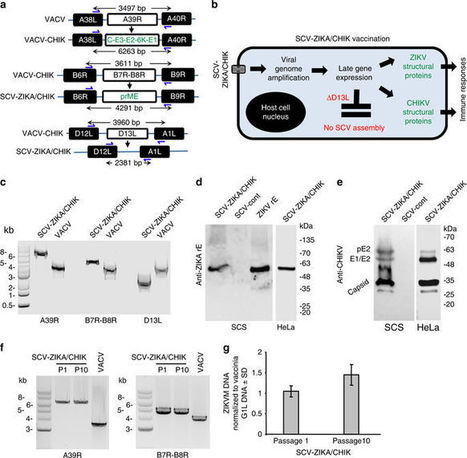

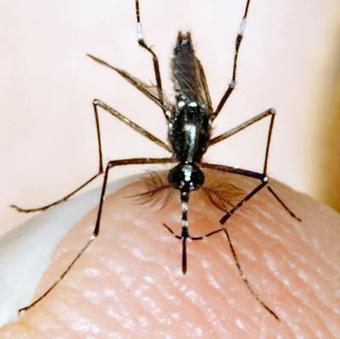
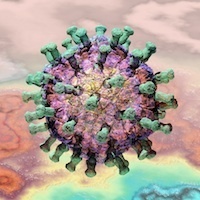


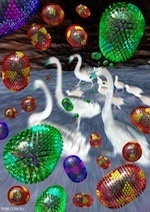
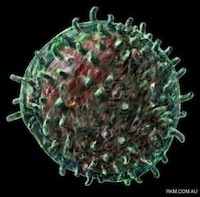

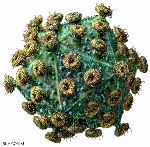


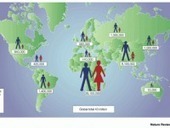
![Roadmap to an HIV Vaccine [maybe] | Virology News | Scoop.it](https://img.scoop.it/oTeYl3hOVzsItmV4_T5QRDl72eJkfbmt4t8yenImKBVvK0kTmF0xjctABnaLJIm9)



